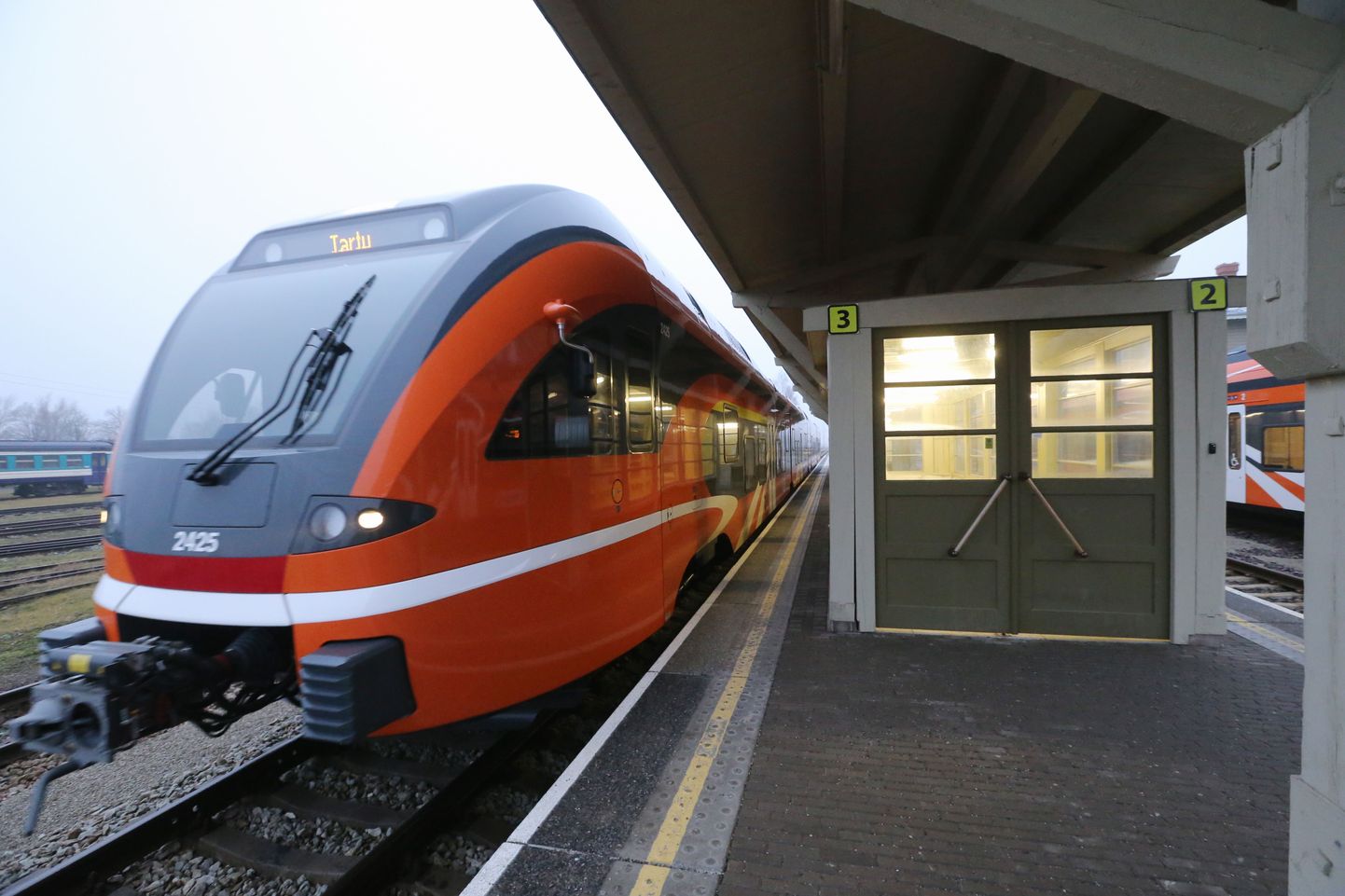
Explosive increase of passengers has Elron thinking of adding to its train fleet – impossible, though, without state support.

Explosive increase of passengers has Elron thinking of adding to its train fleet – impossible, though, without state support.
«To put it correctly, we are currently busy analysing if new trains are needed and I think by year’s end we will have a basic agreement regarding our wishes,» said Elron CEO Andrus Ossip.
When it was decided, in 2007, to get Estonia new trains, says Mr Ossip, the purchases were according to the ability. «Now, numbers of passengers have grown, and we have become wealthier to take the next steps,» he said.
While tongue-tied when talking about ordering the new trains, Mr Ossip admitted an option would be getting additional cars so as to make some trains longer. «Such options are limited as the four wagon trains cannot be lengthened. The two wagon ones are the easiest to add to,» he explained. One extra wagon costs €1.2m and could be delivered in two years after the order is submitted.
«In real life, while we operate based on 70 percent subsidy and 30 percent ticket revenue, we realise Elron will not be doing it out of own means. So now the issue is: how rich is the state,» said Mr Ossip.
Growth not endless
With passenger tally up 50 percent this year, Mr Ossip understands a rate like that is unrealistic considering the demographics. «We won’t get everybody from cars to trains,» he is convinced.
According to Elron sales and development chief Ronnie Kongo, there’s currently an obvious need for fast transport in Tallinn’s near neighbourhood. Meanwhile, national transport development programme has big city connection speed as priority, like the Tallinn-Tartu route. Elron thinks more passengers might be added on the Viljandi, Rapla, as well as Tartu lines. «If the railway condition would allow speeds of 140 km/h to Pärnu, instead of the current 80 km/h, that [would grow] as well,» observes Mr Kongo.
This year has seen the doubling of electric train travellers Westward from Tallinn, but Tartu and Narva show above 50 percent growth as well. The gains are smallest with Pärnu and Viljandi. As admitted by Elron management, the latter has been least developed also.
«In 2015/2016 schedules, we’ll lay more emphasis on [this less developed] South-Western lines,» promised Mr Ossip. Therewith, added trains are in store regarding Rapla.
As a substantial basic change, the Lelle connection is planned to be dropped for those travelling to Pärnu. «From Tallinn, a coupled train goes forth – a part of it headed towards Viljandi, the other towards Pärnu; on the way back, they are again connected,» explained Mr Ossip.
With the media bent on reporting of overcrowded Elron trains, the managers assure us the problem only relates to some ten percent of departures in a week. On the South-West direction, there are four such trips, plus some towards Tartu.
«When someone goes from Liiva to Kohila, which takes 20 minutes, and for the entire train 20 people have to stand, that’s not the end of the world; but if a person has to stand all the way to Rapla in tight conditions, that we do not consider normal,» said Elron’s sales manager and promised they’d find a way out.
Subsidy to stay
«While talking about extra train lines, let me be a parrot and keep repeating: every line added means that 70 percent is subsidy and 30 is ticket revenue i.e. we will have to run up costs in any case,» repeated Mr Ossip, adding that Elron cannot work with losses and just make the state swallow it. «There is no train line in Estonia that would make ends meet,» underlined Mr Ossip.
To get a new train going, affirmations have to be received regarding infrastructure and financing alike – the space and the money guaranteed. «Once we get both fixed, only then the new train can start,» explains Mr Ossip.
At the beginning of the year, Elron’s then chairman Toivo Promm expressed hopes ticket sales might grow to 40 percent. This is no longer considered realistic. «As we know, carriage of goods is dropping and the railways have to review infrastructure fees methodology; for us, it can only go one way – we’ll be paying more,» related Mr Ossip. It’s only a matter of the size of the extra amount, he added.
For the travellers, this will probably mean price rise – again, even though it has already happened twice this year. «The need for correction of ticket prices is there, and it is highly probable the prices are going to be changing once a year,» said Mr Ossip. According to him, Elron aims at keeping train tickets at the bus level. «At the moment, they are a bit lower,» observes the CEO.